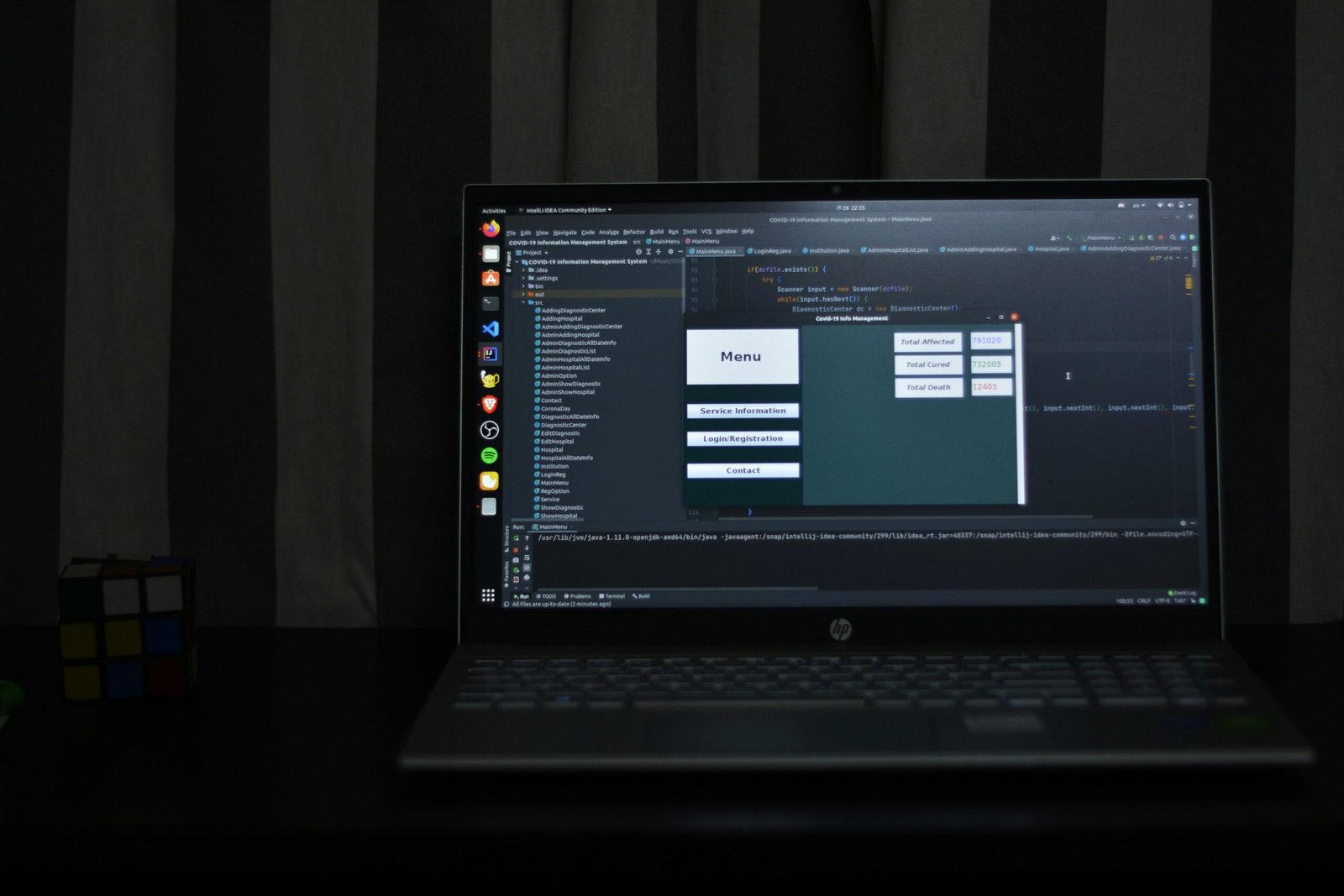Introduction to Project Management Progress Tracking
In the realm of project management, the ability to track progress is a foundational element that can determine the overall success of a project. Progress tracking is the systematic approach to monitoring and evaluating the various stages of a project to ensure that it remains on schedule, within budget, and aligned with the predefined objectives. This practice is essential for meeting deadlines and managing resources efficiently, thereby minimizing the risk of project overruns and underperformance.
Effective tracking involves setting clear milestones and performance indicators that provide tangible metrics for assessment. By breaking down a project into smaller, manageable tasks with specific deadlines, project managers can maintain a clear overview of the project’s advancement. This enables timely identification of potential bottlenecks and facilitates proactive interventions to address any issues that may arise.
Beyond the logistical aspects, progress tracking also plays a crucial role in maintaining team motivation. Knowing that their efforts are being monitored and that their contributions are integral to the project’s success can significantly boost team morale. Regular updates and reviews not only keep the team informed but also foster a sense of accountability and collaboration. When team members see tangible progress and recognize their role in achieving milestones, it enhances their engagement and commitment to the project.
Moreover, motivation is intrinsically linked to the project’s outcome. A motivated team is likely to be more productive, innovative, and resilient in the face of challenges. Therefore, integrating progress tracking with motivational strategies can create a dynamic environment where both individual and collective achievements are celebrated. This holistic approach ensures that the project not only meets its quantitative targets but also thrives qualitatively through the active participation and enthusiasm of the team.
Setting Clear Objectives and Milestones
Establishing clear objectives and milestones at the outset of a project is fundamental to effective project management. Well-defined goals serve as a roadmap for the team, ensuring everyone understands the project’s direction and what is expected. These objectives act as a guiding light, helping to maintain focus and drive progress. To maximize their effectiveness, it is crucial to set SMART goals—Specific, Measurable, Achievable, Relevant, and Time-bound.
Specific objectives are essential for clarity and precision. Instead of vague statements, goals should be explicit and detailed. For instance, rather than aiming to “improve customer satisfaction,” a more specific target would be “increase customer satisfaction scores by 20% within six months.” This specificity eliminates ambiguity and provides a clear understanding of what needs to be achieved.
Measurable goals are equally important. They enable the team to track progress and assess whether the objectives are being met. By incorporating quantifiable metrics, such as percentages, numbers, or dates, it’s easier to determine success. For example, setting a measurable goal like “complete five project phases by the end of Q3” allows for clear monitoring and evaluation.
Achievable goals ensure that the objectives are realistic and attainable within the given constraints. Setting overly ambitious targets can lead to frustration and demotivation. It is vital to consider the team’s capabilities and resources when defining goals. Achievability promotes a sense of accomplishment and motivates the team to strive for success.
Relevant goals align with the broader project and organizational objectives. They should contribute meaningfully to the project’s overall purpose and add value. Ensuring relevance helps maintain focus on priorities and prevents diversion of efforts into less impactful areas.
Time-bound goals are critical for maintaining momentum and ensuring timely completion. Establishing deadlines creates a sense of urgency and drives the team to stay on track. For example, setting a goal to “launch the new product by the end of Q2” provides a clear timeline and helps in scheduling tasks effectively.
Milestones act as checkpoints to assess progress throughout the project lifecycle. These interim targets break down the project into manageable phases and provide opportunities for evaluation. Celebrating milestone achievements fosters motivation and keeps the team engaged. Regularly reviewing milestones helps identify potential issues early and allows for course corrections if needed.
Incorporating SMART goals and milestones into project management practices enhances organization, clarity, and motivation. It ensures that the team remains focused, progress is easily tracked, and objectives are achieved systematically.
Utilizing Project Management Tools
In the realm of project management, leveraging specialized tools can significantly enhance your ability to track progress and maintain motivation. Various platforms such as Trello, Asana, and Microsoft Project offer comprehensive features that facilitate efficient project monitoring.
Trello is a versatile tool known for its user-friendly interface and adaptability. It employs a card and board system where tasks can be organized into lists. This visual layout allows project managers to quickly assess the status of different tasks. Trello’s integration capabilities with other apps also streamline communication and file sharing, ensuring all team members are aligned.
Asana, another popular project management software, excels in task tracking and collaboration. It provides a variety of views including list, board, and calendar views, enabling teams to choose the most suitable format for their workflow. Asana’s timeline view, similar to a Gantt chart, is particularly useful for visualizing project schedules and dependencies. Moreover, Asana’s advanced search and reporting features help in generating detailed progress reports, offering insights into task completion and potential bottlenecks.
Microsoft Project is a robust tool designed for handling complex projects. It offers a comprehensive suite of features such as Gantt charts, resource management, and financial tracking. The Gantt chart feature is instrumental in outlining project timelines and critical paths, enabling managers to foresee and mitigate delays. Additionally, Microsoft Project’s dashboards provide real-time data and analytics, which are essential for informed decision-making and progress tracking.
These project management tools not only aid in monitoring timelines and resource allocation but also play a crucial role in maintaining motivation within the team. By providing clear visibility into task progress and project milestones, these platforms ensure that everyone remains focused and aligned with the project goals. The integration of these tools into your project management practices can lead to more organized, efficient, and successful project outcomes.
Regular Progress Reviews and Updates
In the realm of project management, the importance of regular progress reviews and status updates cannot be overstated. These periodic evaluations serve as critical checkpoints, ensuring that the project remains aligned with its goals and timelines. Conducting regular progress reviews facilitates the identification of potential issues early, allowing for timely interventions and adjustments.
One of the most effective ways to keep a project on track is through periodic meetings. Scheduled at consistent intervals, these meetings provide a platform for team members to discuss progress, address challenges, and recalibrate strategies if necessary. To maximize the efficiency of these meetings, it is crucial to set clear agendas. An agenda helps maintain focus, ensuring that all pertinent topics are covered within the allotted time. Additionally, documenting discussions during these meetings is essential. Detailed minutes can serve as reference points for future reviews, ensuring continuity and accountability.
Progress reports are another vital tool in the project manager’s arsenal. These reports offer a structured way to present data on project milestones, task completions, and resource utilization. A well-prepared progress report not only informs stakeholders about the current status but also highlights areas that require attention. By incorporating key performance indicators (KPIs) and metrics, these reports can provide a quantifiable measure of the project’s health.
Performance reviews, conducted periodically, allow for a more in-depth assessment of individual and team contributions. These reviews can identify strengths and areas for improvement, fostering a culture of continuous improvement. Effective performance reviews should be constructive, focusing on actionable feedback and clear expectations moving forward.
To conduct successful progress reviews, it is important to follow up on action items from previous meetings. This ensures that commitments are honored and progress is made. Setting deadlines for these action items and assigning responsibility can enhance accountability and drive the project forward.
Maintaining Team Engagement and Motivation
Ensuring the project team remains engaged and motivated is vital for successful project management. A motivated team is more likely to stay productive and committed to achieving project goals. One effective strategy for maintaining motivation is recognizing achievements. Celebrating both individual and team accomplishments fosters a sense of pride and validation among team members. This recognition can take various forms, such as verbal praise, awards, or public acknowledgment during meetings. These gestures, though seemingly small, can significantly boost morale and reinforce positive behavior.
Another crucial method to maintain motivation is providing constructive feedback. Constructive feedback helps team members understand their strengths and areas for improvement, fostering a culture of continuous learning and development. It is essential to deliver this feedback in a supportive and non-judgmental manner, focusing on specific behaviors and outcomes rather than personal attributes. Regular feedback sessions can help maintain open communication, allowing team members to feel heard and valued. This, in turn, can enhance their commitment to the project’s success.
Setting up a reward system can also play a significant role in keeping the team motivated. Rewards do not necessarily have to be monetary; they can include extra time off, professional development opportunities, or even simple gestures like team outings. The key is to ensure that rewards are aligned with the team’s values and preferences, making them meaningful and appreciated. A well-thought-out reward system can drive performance by creating a tangible link between effort and recognition.
In conclusion, maintaining team engagement and motivation involves a combination of recognizing achievements, providing constructive feedback, and implementing a reward system. These strategies collectively contribute to a motivated team that is more likely to remain productive and committed to reaching the project goals. By fostering a positive and supportive environment, project managers can ensure that their teams are not only engaged but also poised for success.
Overcoming Challenges and Setbacks
In the realm of project management, encountering challenges and setbacks is inevitable. These obstacles can range from resource constraints and scope creep to unforeseen risks and team dynamics. Effective problem-solving and risk management strategies are essential to navigate these issues successfully.
One common challenge is scope creep, where the project’s requirements expand beyond the initial plan. To combat this, it’s crucial to establish a well-defined scope at the project’s outset and maintain rigorous change control processes. Regularly reviewing project progress against the initial plan can help identify deviations early, allowing for timely corrective actions. Additionally, clear communication with stakeholders helps manage expectations and prevent unnecessary scope expansions.
Resource constraints, such as limited budget or personnel, often pose significant hurdles. Prioritizing tasks based on their impact and urgency can optimize resource allocation. Utilizing project management software can also facilitate better tracking of resources and ensure they are used efficiently. When resource limitations threaten project timelines, consider re-evaluating the project schedule or exploring alternative solutions, such as outsourcing specific tasks.
Risk management is another critical aspect of overcoming setbacks. Identifying potential risks at the planning stage and developing mitigation strategies can significantly reduce their impact. For instance, creating a risk register that outlines possible risks, their likelihood, and mitigation plans ensures that the team is prepared to handle unexpected events. Regular risk assessments throughout the project lifecycle help in adapting these plans as new risks emerge.
Adaptability is key when facing setbacks. Flexibility in project plans allows teams to pivot and adjust their approach as needed. For example, if a particular strategy isn’t yielding the desired results, being open to alternative methods can keep the project on track. Encouraging a culture of continuous improvement and learning within the team fosters resilience and innovation, enabling them to tackle challenges head-on.
Proactive planning plays a vital role in mitigating the impact of typical project obstacles. By anticipating potential issues and developing contingency plans, project managers can ensure smoother execution and maintain motivation within the team. Regularly updating these plans in response to new developments further enhances the project’s resilience, paving the way for successful outcomes.
Communication and Collaboration
Effective communication and collaboration are fundamental components in tracking progress and maintaining motivation within project management. Open lines of communication ensure that all team members are aligned with project goals and can address any issues promptly. Regular team meetings provide a platform for discussing progress, sharing updates, and identifying any obstacles. These meetings also serve as a motivational tool, allowing team members to celebrate milestones and collectively brainstorm solutions to challenges.
Utilizing collaborative tools can significantly enhance the efficiency and cohesiveness of a team. Platforms such as Slack, Microsoft Teams, and Asana facilitate real-time communication and information sharing. These tools allow for seamless collaboration, ensuring that all team members have access to the latest project updates and can contribute effectively regardless of their physical location. Additionally, project management software like Trello or Jira can be used to track tasks, deadlines, and progress, providing a clear visual representation of the project’s status.
Improving communication skills within the team is also crucial. Encourage active listening, where team members fully concentrate on the speaker, understanding their message before responding. This practice helps in reducing misunderstandings and fosters a respectful and collaborative environment. Clear and concise communication should be emphasized to ensure that messages are easily understood and actionable. Regular feedback sessions can also be beneficial, allowing team members to express their thoughts and concerns, and providing an opportunity for continuous improvement.
By prioritizing effective communication and leveraging collaborative tools, project managers can create a cohesive team environment that supports tracking progress and maintaining motivation. Ensuring that everyone is on the same page and feels heard and valued will lead to a more productive and motivated team, ultimately contributing to the successful completion of the project.
Reflecting on Lessons Learned
Upon the completion of any project, reflecting on lessons learned is a critical step in the project management process. Conducting a post-mortem analysis allows project managers and teams to gain valuable insights into what worked well and what didn’t. This reflective practice not only aids in recognizing successful strategies but also in identifying areas that need improvement, thereby fostering continuous development in project management practices.
A thorough post-mortem analysis involves a comprehensive review of the project’s lifecycle. This includes evaluating the initial planning stages, the execution phase, and the final outcome. By systematically assessing these stages, teams can pinpoint specific actions and decisions that contributed to the project’s success or challenges. Documentation of these findings is essential, as it serves as a reference for future projects, ensuring that the same mistakes are not repeated and that successful tactics are replicated.
Moreover, documenting lessons learned helps in building a knowledge repository that can benefit the entire organization. This repository can be shared across different teams and departments, promoting a culture of knowledge sharing and continuous improvement. Teams can leverage this documented information to enhance their project management methodologies, leading to more efficient and effective project execution in the future.
Reflecting on lessons learned also plays a pivotal role in maintaining team motivation. Acknowledging achievements and recognizing the efforts of team members can boost morale and encourage a sense of accomplishment. On the other hand, constructive feedback on areas needing improvement can be used to set clear, actionable goals for future projects, further motivating the team to strive for excellence.
In essence, the practice of reflecting on lessons learned is integral to the evolution of project management. It not only contributes to personal and team growth but also to the overall advancement of project management practices within an organization. This continuous reflection and improvement cycle ensures that each project becomes a stepping stone towards greater efficiency, effectiveness, and success in the long run.





